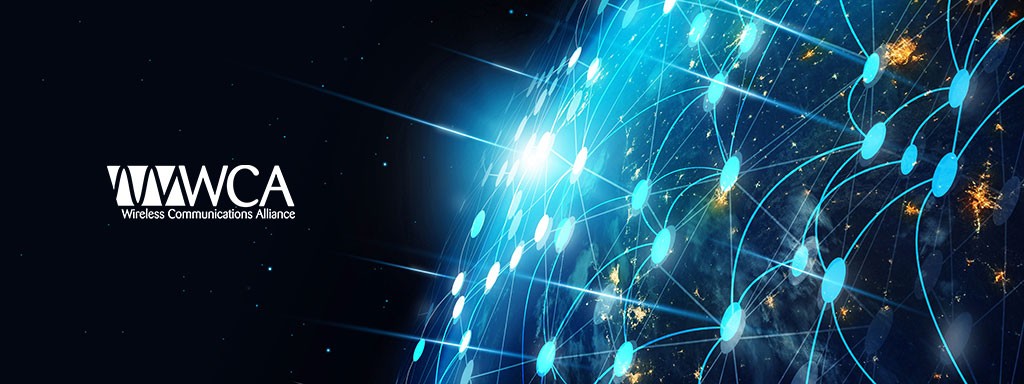
Wireless and Connected Technology Explained. We explore the evolving world of connected technology with depth and clarity. Our analyses uncover emerging trends, assess current advancements, and forecast future innovations. Whether you are an industry professional or simply curious, our exploration of 5G, 6G, IoT, and edge computing offers valuable insight. From industrial IoT and connected AI to mmWave and adaptive network architectures, we examine how these technologies are shaping the next era of digital connectivity.
5G (9)
5G Convergence refers to the integration and unification of various technologies, services, and network architectures under the umbrella of 5G wireless technology. This convergence aims to create a more seamless and efficient telecommunications ecosystem. Key aspects of 5G Convergence include:
- Unified Network Architecture: 5G Convergence involves integrating different types of networks, such as cellular, Wi-Fi, and satellite, into a unified system. This allows for more efficient resource management and service delivery.
- Integration of Services: Convergence in 5G isn’t just about network technologies; it also includes the integration of various services like voice, data, and multimedia, providing a comprehensive and seamless user experience.
- IoT and Industrial Integration: 5G Convergence is crucial in the integration of IoT devices and industrial applications, enabling seamless communication between a vast array of devices and systems.
- Network Slicing: A key feature of 5G, network slicing allows the creation of multiple virtual networks over a single physical network infrastructure. This enables the tailored provisioning of network resources for different applications and services.
- Enhanced Data Processing: With the convergence of edge computing and 5G, data processing becomes more efficient. Data can be processed closer to where it is generated, reducing latency and improving response times.
- Support for Diverse Applications: 5G Convergence supports a wide range of applications, from high-speed mobile broadband to mission-critical communication and massive IoT deployments.
- Standardization and Interoperability: Ensuring interoperability and compliance with global standards is essential in 5G Convergence, to enable seamless communication across devices and networks.
- Advanced Technologies Synergy: 5G Convergence brings together advancements like AI, big data analytics, and cloud computing, leveraging these technologies to enhance network performance and user experience.
5G Convergence represents a transformation in how communication networks are built and operated, offering a more integrated, flexible, and efficient approach to meet the diverse demands of modern digital society.
5G Fixed Wireless Access (FWA) is a method of providing wireless broadband internet services to homes and businesses using 5G cellular network technology. It is an alternative to traditional wired broadband like DSL, cable, or fiber optics. Here are key aspects of 5G FWA:
- Use of 5G Technology: 5G FWA utilizes the high-speed and low-latency capabilities of the 5G network to deliver internet services.
- Wireless Connectivity: Unlike traditional broadband that requires physical wiring, FWA uses wireless signals to connect users to the internet. This can significantly reduce the need for extensive physical infrastructure.
- Deployment Ease: FWA is particularly beneficial in areas where laying cables is challenging or not cost-effective. It allows for rapid deployment of broadband services in rural or underserved areas.
- High-Speed Internet: With 5G technology, FWA can offer comparable, and in some cases, superior speeds to wired broadband solutions, suitable for high-bandwidth applications like streaming, gaming, and video conferencing.
- Network Infrastructure: The setup typically involves a 5G modem or router at the user’s location, which communicates with the nearest 5G cell tower to provide internet connectivity.
- Cost-Effectiveness: For network providers, FWA can be a more cost-effective way to expand broadband access, especially in less densely populated areas.
- Improved Capacity and Range: Leveraging advanced 5G technologies like beamforming and Massive MIMO, FWA can offer improved capacity and range compared to earlier wireless technologies.
5G FWA is seen as a key component in the broader rollout of 5G, offering a flexible and efficient way to expand broadband access and bridge the digital divide, particularly in regions where wired infrastructure is lacking or insufficient.
5G Massive IoT refers to the application of 5G technology to massively connect a large number of Internet of Things (IoT) devices. This concept is part of the broader vision of 5G networks, which aim to provide not just faster internet speeds for smartphones but also to enable the interconnectivity of billions of devices. Here are key aspects of 5G Massive IoT:
- High Device Connectivity: One of the primary goals of 5G Massive IoT is to support an extremely large number of connected devices per square kilometer, far exceeding the capacity of previous cellular technologies.
- Low Power Consumption: 5G Massive IoT focuses on providing connectivity to devices that require low power consumption, enabling devices to operate for years on a single battery charge. This is crucial for sensors and devices in remote or hard-to-reach locations.
- Wide Range and Deep Coverage: 5G technology aims to offer enhanced coverage that can reach challenging areas, such as deep indoors or in rural locations, making it suitable for a wide range of IoT applications.
- Small Data Packets: Massive IoT devices typically transmit small amounts of data infrequently. 5G networks are designed to efficiently handle such small data packets, optimizing network usage and performance.
- Diverse Applications: Applications of 5G Massive IoT are diverse and include smart cities, industrial IoT, environmental monitoring, agriculture, smart buildings, and more.
- Integration with Other Technologies: 5G Massive IoT is expected to work in tandem with other technologies like edge computing and AI to process and manage the vast amounts of data generated by IoT devices.
- Enhanced IoT Capabilities: Beyond connectivity, 5G Massive IoT aims to enhance capabilities such as device-to-device communication, real-time data analytics, and automated decision-making processes.
In summary, 5G Massive IoT represents a significant leap in the capability to connect a vast number of IoT devices, enabling new applications and efficiencies across various industries, and is a critical component of the evolving 5G landscape.
5G RedCap (Reduced Capability) is a new feature introduced in the 3rd Generation Partnership Project (3GPP) Release 17. It is designed to cater to devices that require higher capabilities than those offered by LTE-M or NB-IoT (both are narrowband IoT technologies), but do not need the full capabilities of standard 5G devices. This makes 5G RedCap particularly suitable for a specific segment of IoT and industrial applications. Key aspects of 5G RedCap include:
- Lower Device Complexity: 5G RedCap aims to reduce the complexity and cost of devices compared to full-featured 5G devices. This is achieved by scaling down certain aspects of the 5G technology.
- Moderate Data Rates: While offering lower data rates than the full 5G standard, 5G RedCap still provides higher data rates than narrowband IoT technologies, making it suitable for applications that require moderate bandwidth.
- Energy Efficiency: With its reduced complexity, 5G RedCap also aims to improve energy efficiency, which is crucial for battery-powered IoT devices.
- Broad Applications: This technology is ideal for a range of IoT applications, including wearables, industrial sensors, and certain types of smart meters that need more capability than NB-IoT or LTE-M but do not require the high data rates and full capabilities of 5G.
- Network Compatibility: 5G RedCap is designed to be compatible with existing 5G networks, enabling seamless integration with the current infrastructure.
- Balanced Performance: The key advantage of 5G RedCap is its balanced performance, offering better capabilities than narrowband technologies while avoiding the complexity and cost of full 5G.
In summary, 5G RedCap represents an important step in the evolution of 5G and IoT, bridging the gap between narrowband IoT technologies and full 5G, and providing a more cost-effective and efficient solution for a wide range of IoT applications.
CBRS (Citizens Broadband Radio Service) in the context of 5G-Advanced refers to an innovative approach in wireless communication where the CBRS spectrum is utilized for advanced 5G applications. CBRS operates in the 3.5 GHz band (3550 MHz to 3700 MHz) in the United States and is designed to offer a shared spectrum model. This approach is significant in the evolution of 5G networks for several reasons:
- Shared Spectrum Access: CBRS uses a three-tiered shared spectrum access system, allowing for efficient use of the 3.5 GHz band. This system includes Incumbent Access, Priority Access, and General Authorized Access.
- Enhanced Capacity and Coverage: By leveraging the CBRS band, 5G-Advanced networks can enhance capacity and coverage, particularly in densely populated areas or for enterprise use cases.
- Flexibility and Cost-Effectiveness: CBRS offers a more flexible and cost-effective way for organizations to deploy private 5G networks, as it reduces the need for purchasing exclusive spectrum licenses.
- Innovation in Wireless Services: The utilization of CBRS in 5G-Advanced paves the way for innovative wireless services and applications, including IoT deployments, industrial automation, and enhanced mobile broadband.
- Improved Network Performance: The CBRS band is well-suited for 5G use due to its balance between coverage and capacity, making it ideal for a variety of applications from urban to rural deployments.
- Regulatory Framework: The Federal Communications Commission (FCC) has established rules for CBRS, promoting efficient use of the spectrum while protecting incumbent users.
- Compatibility with Existing Technology: CBRS can be integrated with existing LTE and 5G NR technology, allowing for seamless adoption and integration into current network infrastructures.
CBRS 5G-Advanced represents a significant step in diversifying the spectrum usage for 5G, offering new opportunities for network operators, enterprises, and other entities to deploy flexible and efficient 5G solutions.
5G (9)
5G Convergence refers to the integration and unification of various technologies, services, and network architectures under the umbrella of 5G wireless technology. This convergence aims to create a more seamless and efficient telecommunications ecosystem. Key aspects of 5G Convergence include:
- Unified Network Architecture: 5G Convergence involves integrating different types of networks, such as cellular, Wi-Fi, and satellite, into a unified system. This allows for more efficient resource management and service delivery.
- Integration of Services: Convergence in 5G isn’t just about network technologies; it also includes the integration of various services like voice, data, and multimedia, providing a comprehensive and seamless user experience.
- IoT and Industrial Integration: 5G Convergence is crucial in the integration of IoT devices and industrial applications, enabling seamless communication between a vast array of devices and systems.
- Network Slicing: A key feature of 5G, network slicing allows the creation of multiple virtual networks over a single physical network infrastructure. This enables the tailored provisioning of network resources for different applications and services.
- Enhanced Data Processing: With the convergence of edge computing and 5G, data processing becomes more efficient. Data can be processed closer to where it is generated, reducing latency and improving response times.
- Support for Diverse Applications: 5G Convergence supports a wide range of applications, from high-speed mobile broadband to mission-critical communication and massive IoT deployments.
- Standardization and Interoperability: Ensuring interoperability and compliance with global standards is essential in 5G Convergence, to enable seamless communication across devices and networks.
- Advanced Technologies Synergy: 5G Convergence brings together advancements like AI, big data analytics, and cloud computing, leveraging these technologies to enhance network performance and user experience.
5G Convergence represents a transformation in how communication networks are built and operated, offering a more integrated, flexible, and efficient approach to meet the diverse demands of modern digital society.
5G Fixed Wireless Access (FWA) is a method of providing wireless broadband internet services to homes and businesses using 5G cellular network technology. It is an alternative to traditional wired broadband like DSL, cable, or fiber optics. Here are key aspects of 5G FWA:
- Use of 5G Technology: 5G FWA utilizes the high-speed and low-latency capabilities of the 5G network to deliver internet services.
- Wireless Connectivity: Unlike traditional broadband that requires physical wiring, FWA uses wireless signals to connect users to the internet. This can significantly reduce the need for extensive physical infrastructure.
- Deployment Ease: FWA is particularly beneficial in areas where laying cables is challenging or not cost-effective. It allows for rapid deployment of broadband services in rural or underserved areas.
- High-Speed Internet: With 5G technology, FWA can offer comparable, and in some cases, superior speeds to wired broadband solutions, suitable for high-bandwidth applications like streaming, gaming, and video conferencing.
- Network Infrastructure: The setup typically involves a 5G modem or router at the user’s location, which communicates with the nearest 5G cell tower to provide internet connectivity.
- Cost-Effectiveness: For network providers, FWA can be a more cost-effective way to expand broadband access, especially in less densely populated areas.
- Improved Capacity and Range: Leveraging advanced 5G technologies like beamforming and Massive MIMO, FWA can offer improved capacity and range compared to earlier wireless technologies.
5G FWA is seen as a key component in the broader rollout of 5G, offering a flexible and efficient way to expand broadband access and bridge the digital divide, particularly in regions where wired infrastructure is lacking or insufficient.
5G Massive IoT refers to the application of 5G technology to massively connect a large number of Internet of Things (IoT) devices. This concept is part of the broader vision of 5G networks, which aim to provide not just faster internet speeds for smartphones but also to enable the interconnectivity of billions of devices. Here are key aspects of 5G Massive IoT:
- High Device Connectivity: One of the primary goals of 5G Massive IoT is to support an extremely large number of connected devices per square kilometer, far exceeding the capacity of previous cellular technologies.
- Low Power Consumption: 5G Massive IoT focuses on providing connectivity to devices that require low power consumption, enabling devices to operate for years on a single battery charge. This is crucial for sensors and devices in remote or hard-to-reach locations.
- Wide Range and Deep Coverage: 5G technology aims to offer enhanced coverage that can reach challenging areas, such as deep indoors or in rural locations, making it suitable for a wide range of IoT applications.
- Small Data Packets: Massive IoT devices typically transmit small amounts of data infrequently. 5G networks are designed to efficiently handle such small data packets, optimizing network usage and performance.
- Diverse Applications: Applications of 5G Massive IoT are diverse and include smart cities, industrial IoT, environmental monitoring, agriculture, smart buildings, and more.
- Integration with Other Technologies: 5G Massive IoT is expected to work in tandem with other technologies like edge computing and AI to process and manage the vast amounts of data generated by IoT devices.
- Enhanced IoT Capabilities: Beyond connectivity, 5G Massive IoT aims to enhance capabilities such as device-to-device communication, real-time data analytics, and automated decision-making processes.
In summary, 5G Massive IoT represents a significant leap in the capability to connect a vast number of IoT devices, enabling new applications and efficiencies across various industries, and is a critical component of the evolving 5G landscape.
5G RedCap (Reduced Capability) is a new feature introduced in the 3rd Generation Partnership Project (3GPP) Release 17. It is designed to cater to devices that require higher capabilities than those offered by LTE-M or NB-IoT (both are narrowband IoT technologies), but do not need the full capabilities of standard 5G devices. This makes 5G RedCap particularly suitable for a specific segment of IoT and industrial applications. Key aspects of 5G RedCap include:
- Lower Device Complexity: 5G RedCap aims to reduce the complexity and cost of devices compared to full-featured 5G devices. This is achieved by scaling down certain aspects of the 5G technology.
- Moderate Data Rates: While offering lower data rates than the full 5G standard, 5G RedCap still provides higher data rates than narrowband IoT technologies, making it suitable for applications that require moderate bandwidth.
- Energy Efficiency: With its reduced complexity, 5G RedCap also aims to improve energy efficiency, which is crucial for battery-powered IoT devices.
- Broad Applications: This technology is ideal for a range of IoT applications, including wearables, industrial sensors, and certain types of smart meters that need more capability than NB-IoT or LTE-M but do not require the high data rates and full capabilities of 5G.
- Network Compatibility: 5G RedCap is designed to be compatible with existing 5G networks, enabling seamless integration with the current infrastructure.
- Balanced Performance: The key advantage of 5G RedCap is its balanced performance, offering better capabilities than narrowband technologies while avoiding the complexity and cost of full 5G.
In summary, 5G RedCap represents an important step in the evolution of 5G and IoT, bridging the gap between narrowband IoT technologies and full 5G, and providing a more cost-effective and efficient solution for a wide range of IoT applications.
CBRS (Citizens Broadband Radio Service) in the context of 5G-Advanced refers to an innovative approach in wireless communication where the CBRS spectrum is utilized for advanced 5G applications. CBRS operates in the 3.5 GHz band (3550 MHz to 3700 MHz) in the United States and is designed to offer a shared spectrum model. This approach is significant in the evolution of 5G networks for several reasons:
- Shared Spectrum Access: CBRS uses a three-tiered shared spectrum access system, allowing for efficient use of the 3.5 GHz band. This system includes Incumbent Access, Priority Access, and General Authorized Access.
- Enhanced Capacity and Coverage: By leveraging the CBRS band, 5G-Advanced networks can enhance capacity and coverage, particularly in densely populated areas or for enterprise use cases.
- Flexibility and Cost-Effectiveness: CBRS offers a more flexible and cost-effective way for organizations to deploy private 5G networks, as it reduces the need for purchasing exclusive spectrum licenses.
- Innovation in Wireless Services: The utilization of CBRS in 5G-Advanced paves the way for innovative wireless services and applications, including IoT deployments, industrial automation, and enhanced mobile broadband.
- Improved Network Performance: The CBRS band is well-suited for 5G use due to its balance between coverage and capacity, making it ideal for a variety of applications from urban to rural deployments.
- Regulatory Framework: The Federal Communications Commission (FCC) has established rules for CBRS, promoting efficient use of the spectrum while protecting incumbent users.
- Compatibility with Existing Technology: CBRS can be integrated with existing LTE and 5G NR technology, allowing for seamless adoption and integration into current network infrastructures.
CBRS 5G-Advanced represents a significant step in diversifying the spectrum usage for 5G, offering new opportunities for network operators, enterprises, and other entities to deploy flexible and efficient 5G solutions.














































